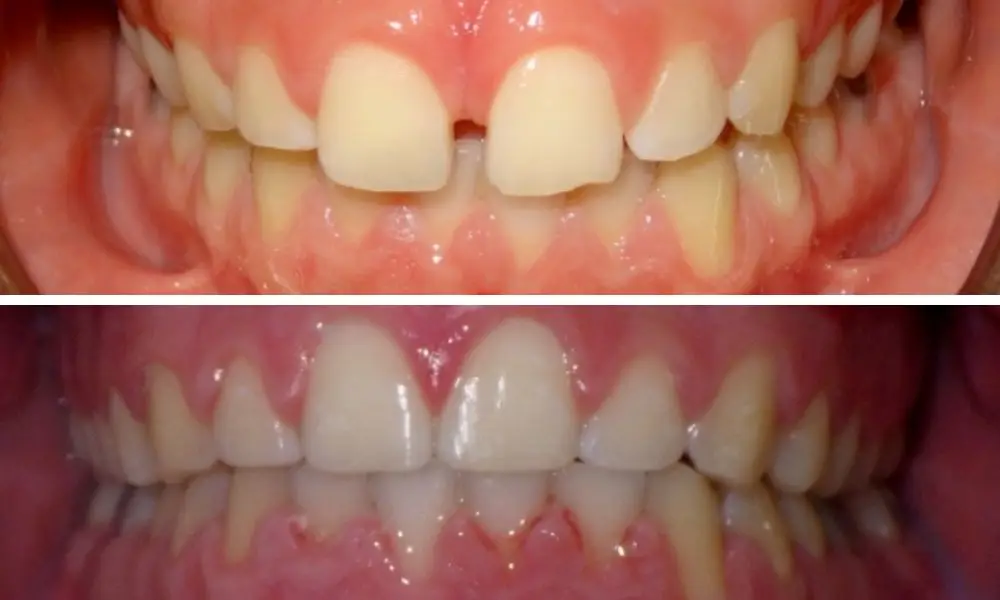When Should Your Kids Get Braces? Video Guide
What’s the Youngest Age to Get Braces?
As mentioned above, children should visit an orthodontist by the age of 7, to get an examination and determine whether they will need braces. Early interventions like palatal expanders or other fixed or removable orthodontic appliances can help guide growing adult teeth into the correct positions, minimizing or even eliminating the need for future treatment. Watching a video of the procedures can also help children understand what to expect during their orthodontic appointments.
When a child can begin comprehensive orthodontic treatment depends on their dental growth and overall development. Children should have lost the majority of their baby teeth and have grown most of their adult teeth, but they can still begin braces with a mix of both.
Many children start braces as young as 8, with early orthodontia called Interceptive treatment or Phase I treatment. The majority, however, start in the middle school years, between 10 and 14 years old.
Orthodontists also offer 2-phase braces treatment , which provides a combination of early intervention and traditional orthodontic care. Phase 1 makes adjustments to the jaw and primary teeth to promote healthy growth of the adult teeth and intervene in any early orthodontic and developmental issues. Phase 2 moves the adult teeth into their healthy, correct positions.
What Age Should Children Get Braces?
While braces are effective at any age, the most effective time to get braces is at an early age when the adult teeth have just grown in and are still malleable, and the underlying dental structures, including the jaws and facial bones, still have growth potential.
According to the Mayo Clinic , braces treatment should ideally begin when a child has lost most of their primary teeth and most of the adult permanent teeth have grown in. This occurs between 8-14 years of age. Most children will be ready for braces in the middle school years, about 11-14 years old.
Young braces patients (between 9-15) generally can expect faster results with more lasting alignment than older patients. Since the teeth and bones are still growing, they are less dense and easier to move, and more likely to stay permanently in their new positions. Early adolescent children also tend to have faster metabolisms, which further aids treatment.
A pre-braces examination should start even earlier than braces treatment, according to the American Association of Orthodontists : children should visit an orthodontist at age 7 to determine whether they will need orthodontic care in the future and whether any early interventions may be necessary to minimize the need for future treatment.
However, no age is too late for braces. Kids, teens, and adults of all ages can expect excellent results from orthodontic treatment. In fact, research from the AAO suggests that 1 in 3 orthodontic patients is an adult over 18 years old. New braces treatments like Invisalign removable aligners provide discreet and effective orthodontic care and have become more popular among working professionals.
But all forms of orthodontic treatment work well for adults, including traditional metal braces , clear or ceramic braces, and lingual braces.


Signs Your Child Needs Braces
Even if your child still has mostly primary teeth, there are signs that they may need braces. As your child’s teeth begin to fall out and adult teeth grow in, keep an eye on any of the below signs: they could be indicators of a need for orthodontic care.
- Premature or late loss of baby teeth
- Noticeably crowded or overlapping teeth
- Large gaps between adult teeth
- Pain or discomfort when chewing, swallowing, or biting
- Crossed bite when mouth is closed
- Top teeth sticking out too far
- Teeth that don’t align properly when closed
- Jaw clicking or locking
- Mouth breathing
- Oral bad habits like teeth grinding, thumb sucking, or tongue thrusting
- Headaches, jaw pain, or dental pain
- Adult teeth not growing in or growing in at the wrong angle
Early childhood teeth decay and rotting can cause the adult teeth to grow abnormally, so if your child has had significant decay in their primary teeth, schedule an orthodontist visit early to discuss the potential need for orthodontic care.
Genetics plays a large factor in dental development as well: if you or other closely related family members required orthodontic care or have severely misaligned teeth, there’s a good chance your child will need care as well.
Scheduling a consultation with an orthodontist is always a good idea: many orthodontic offices offer complimentary preliminary consults if you do not have dental coverage, so those visits are risk-free and very informative.
By starting as early as 7 years old, you’ll know early whether orthodontic treatment is necessary to help your child achieve a healthy, lasting smile and healthy bite.
Can Adults Get Braces?
Braces can transform your smile at any age! While orthodontists encourage that children get orthodontic care early, braces and clear aligners can both achieve beautiful, healthy results for adults of any age.
According to the research mentioned above from the American Association of Orthodontists, a full one-third of orthodontic patients are over the age of 18.
As orthodontic care has become more affordable and more accessible, many adults are taking the opportunity to correct long-standing issues with their smiles and achieve healthy bites and beautiful, confident smiles.
No one should have to suffer a smile they don’t love. No matter what age you are, you can improve your smile.
Braces Treatments, Before and After
Braces are known to transform smiles using the same tried and true methods that have worked for generations. We have compiled several real Diamond Braces patients who have corrected their smiles using braces.
Do You Need Spacers?
Spacers are generally used for a week or two before braces treatment, to create small gaps between certain teeth. Spacers are usually used on the back molars, where metal bands will be attached. The spacers are made of rubber or metal.
If your orthodontist uses them for your case, you will only wear them for 1-2 weeks. Spacers may feel uncomfortable, like a piece of food trapped between your teeth with braces.
